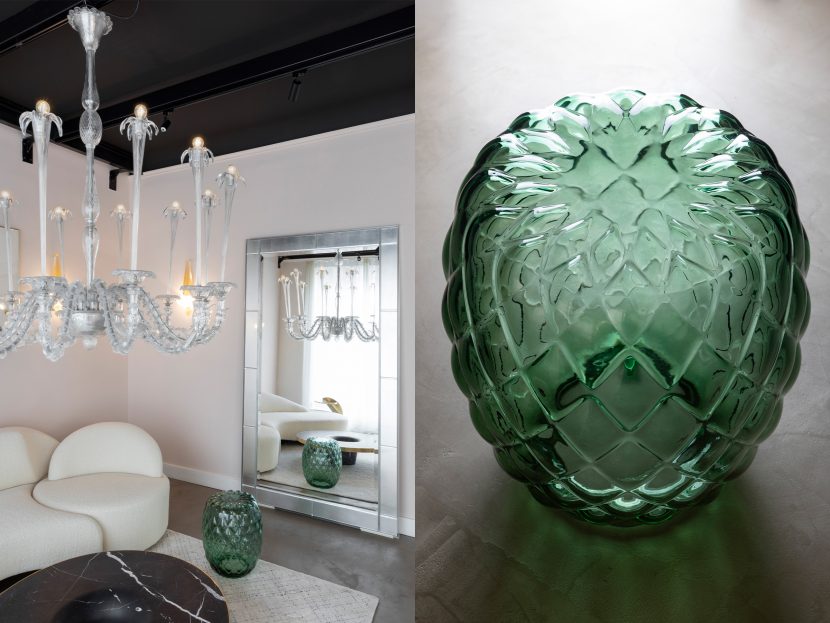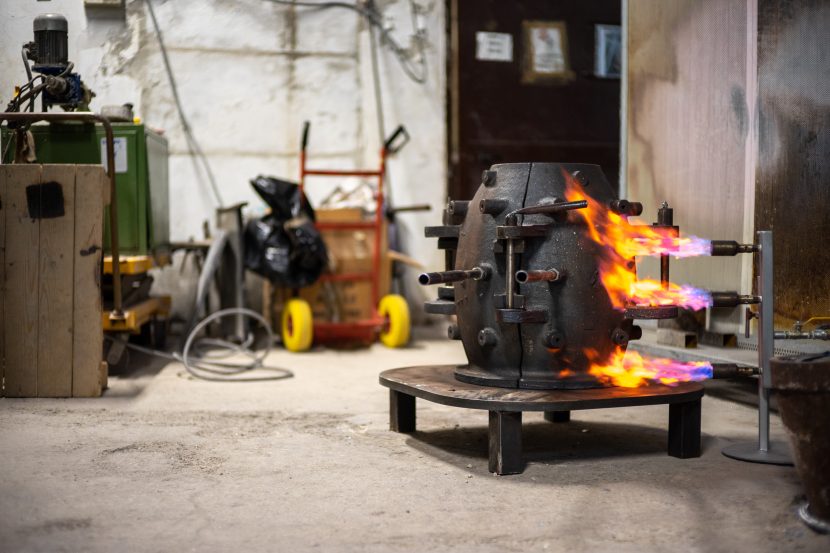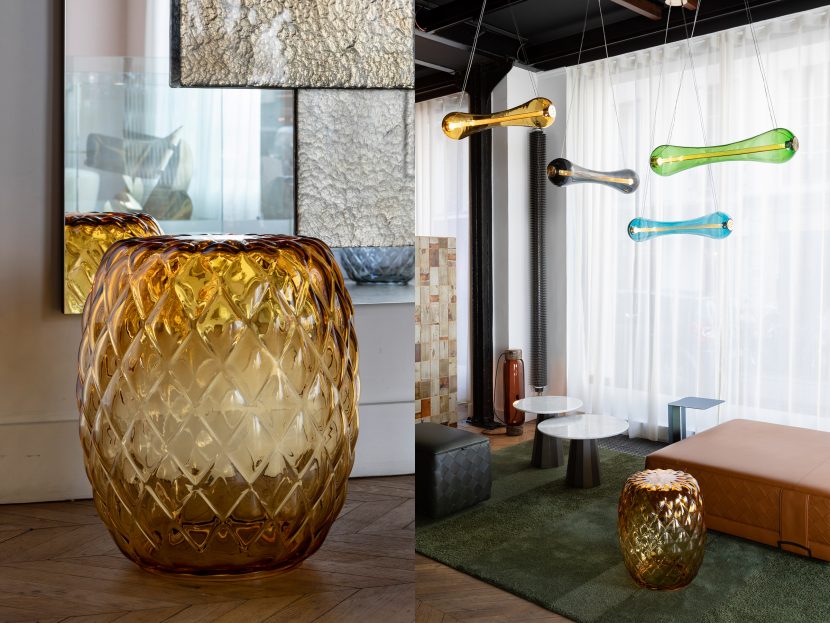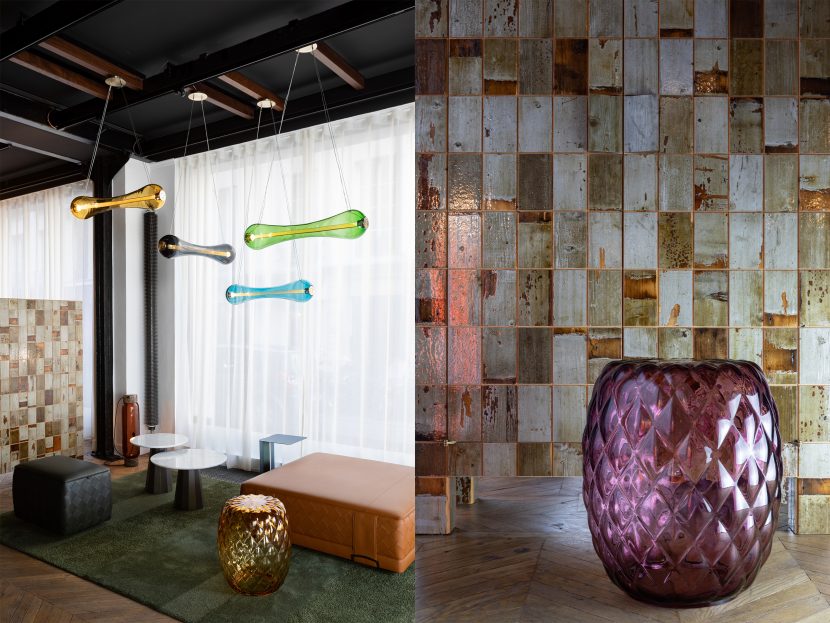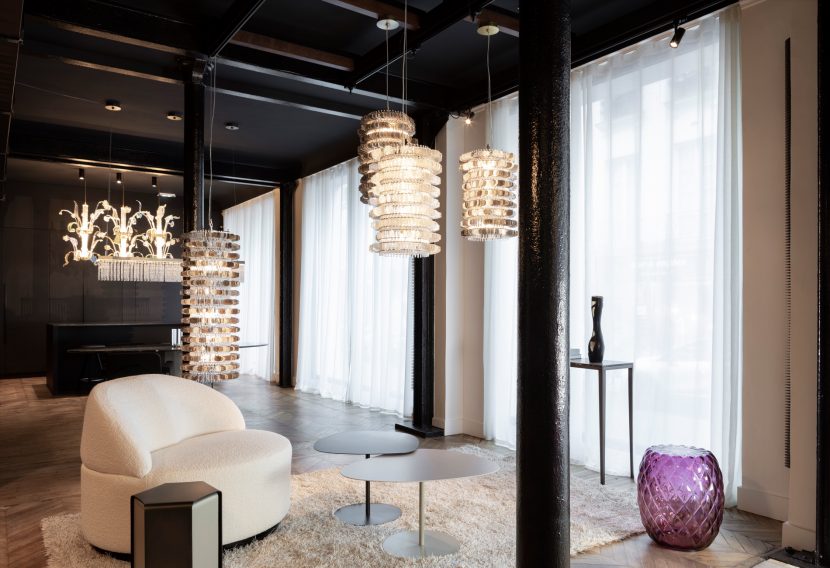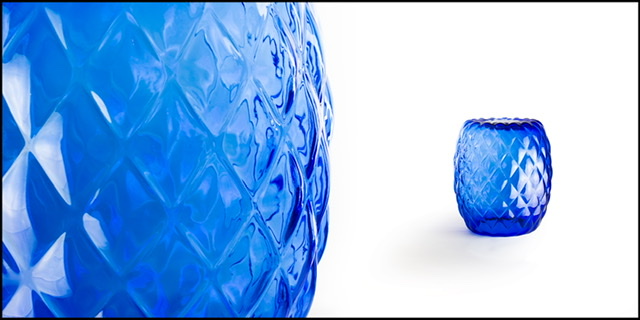
Memento, 2000 Years of Glass Art
For close to nine decades, we have explored the relationship between Murano glass and lighting designs. The time has come to discover how this old-world craft can play a key element in furniture design. To inaugurate this new milestone, we introduce you to Memento—a stool and end table—by Dan Yeffet.
When Ruben saw the renderings of Memento for the first time, he immediately recognized that the graceful design was hiding a challenge that is at the heart and soul of what Veronese is committed to—the cultivation and preservation of Murano glass artistry. Ruben and Dan understood that creating Memento required a leap of faith. Rarely, if ever, has a functional mold-blown glass design with a decorative motif of such magnitude been created. This shared vision for exploring new territories while remaining true to glass art heritage is what drove this collaboration.
Memento’s design stretches the limits established by master Murano glass artisans to achieve new heights in contemporary Murano glass art. The challenge posed lay in the combination of the design’s considerable size (47 cm tall, 42 cm in diameter), diamond-quilted relief motif, and purpose. More than a year of research and development was required to create its complicated mold weighing 350 kilograms. Then, five master artisans were tasked with manipulating the enormous volume of glass into a refined object.
While glass art has been around for over five thousand years, free-blowing and mold-blowing techniques developed two thousand years ago during the Roman Empire, when glassmaking flourished. It is believed that the use of molds commenced in the ancient city of Sidon and was initiated by antiquity’s most renowned mold blower, Ennion. His works are the earliest preserved designs found to date and he is renowned for producing multi-piece mold-blown glass vessels that are complex in their shapes, arrangements, and decorative motifs.
While glass art has been around for over five thousand years, free-blowing and mold-blowing techniques developed two thousand years ago during the Roman Empire, when glassmaking flourished. It is believed that the use of molds commenced in the ancient city of Sidon and was initiated by antiquity’s most renowned mold blower, Ennion. His works are the earliest preserved designs found to date and he is renowned for producing multi-piece mold-blown glass vessels that are complex in their shapes, arrangements, and decorative motifs.
2000 years later, the Murano glass artisans used the same techniques passed down to them from antiquities to create Memento. While the techniques are similar, the way they manipulated them has evolved, opening the door to creating even more sophisticated objects. Today, Memento stands as a testimony to 2,000 years of evolution in mold-blown glass art.
We are grateful to continue the legacy of Ennion and all the glass masters who followed, and to be a part of glass art heritage.
Photos: Pierrick Verny



